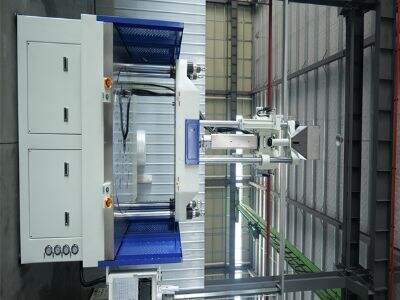Vertical injection moulding for small plastic parts In this process, molten plastic is forced into an upright, or vertical, mould. This process is used to produce items such as buttons, buckles, and small containers. It contrasts with horizontal injection moulding, where the mould is positioned flat. In vertical injection moulding, gravity assists with keeping the insert in the proper position when the plastic is poured in. This process is excellent for producing highly detailed and complex components with high precision.
Vertical Injection Moulding: The Design of Moulds
There are a few design considerations for the mould used for vertical injection moulding to ensure the process is more efficient. A mould should simplify the injection of plastic, cool the finished part properly, and make it easy to remove the final product. The fully automatic vertical injection moulding machine must play the right size, and shape, too, so that the finished product is spot on. The mould is not only the outgoing form of the item, it also needs to be strong enough to resist the plastic when injected and easy clean up to limit how often they need to be replaced.
Achieving Excellent Results Even with a Decent Mould Design
For quality result vertical injection moulding, good mould design is very important. A well-designed moulding machine will also promote even filling of the plastic and ensure a smooth surface finish on the final product. The channels will help prevent the molding part from warping or shrinking. It should have the correct angle and be angled such that removing the product is simple. Manufacturers can achieve excellent results every time by considering these details.
D Tips for Designing Moulds for Vertical Injection Moulding
Below are some helpful tips to keep in mind when creating a mould for vertical injection moulding. 1st: Consider the material of the mould. The final product can vary depending on the materials used. The design should also feature vents to prevent air bubbles from being trapped in the moulding. Gates (openings for the plastic) should be properly positioned to enable flow. Finally, the mould design must then be tested and refined before products can be produced to ensure it is perfect.
Smart Mould Design for More Efficient and Accurate Moulds
Horizontal and vertical moulds serve the same process purposes but are quite differently structured. Optimising the mould design allow the manufacturers to speed up the production, reduce the material waste and enhance efficiency. 、 By maintaining attention to these details and continually working to improve the mould design, manufacturers can achieve excellent results time after time.

 EN
EN
 AR
AR
 HR
HR
 CS
CS
 DA
DA
 NL
NL
 FI
FI
 FR
FR
 DE
DE
 EL
EL
 HI
HI
 IT
IT
 JA
JA
 KO
KO
 NO
NO
 PL
PL
 PT
PT
 RO
RO
 RU
RU
 ES
ES
 SV
SV
 TL
TL
 IW
IW
 ID
ID
 LV
LV
 UK
UK
 VI
VI
 HU
HU
 TH
TH
 TR
TR
 FA
FA
 MS
MS
 GA
GA
 BE
BE
 IS
IS
 AZ
AZ
 UR
UR
 BN
BN
 JW
JW
 UZ
UZ

